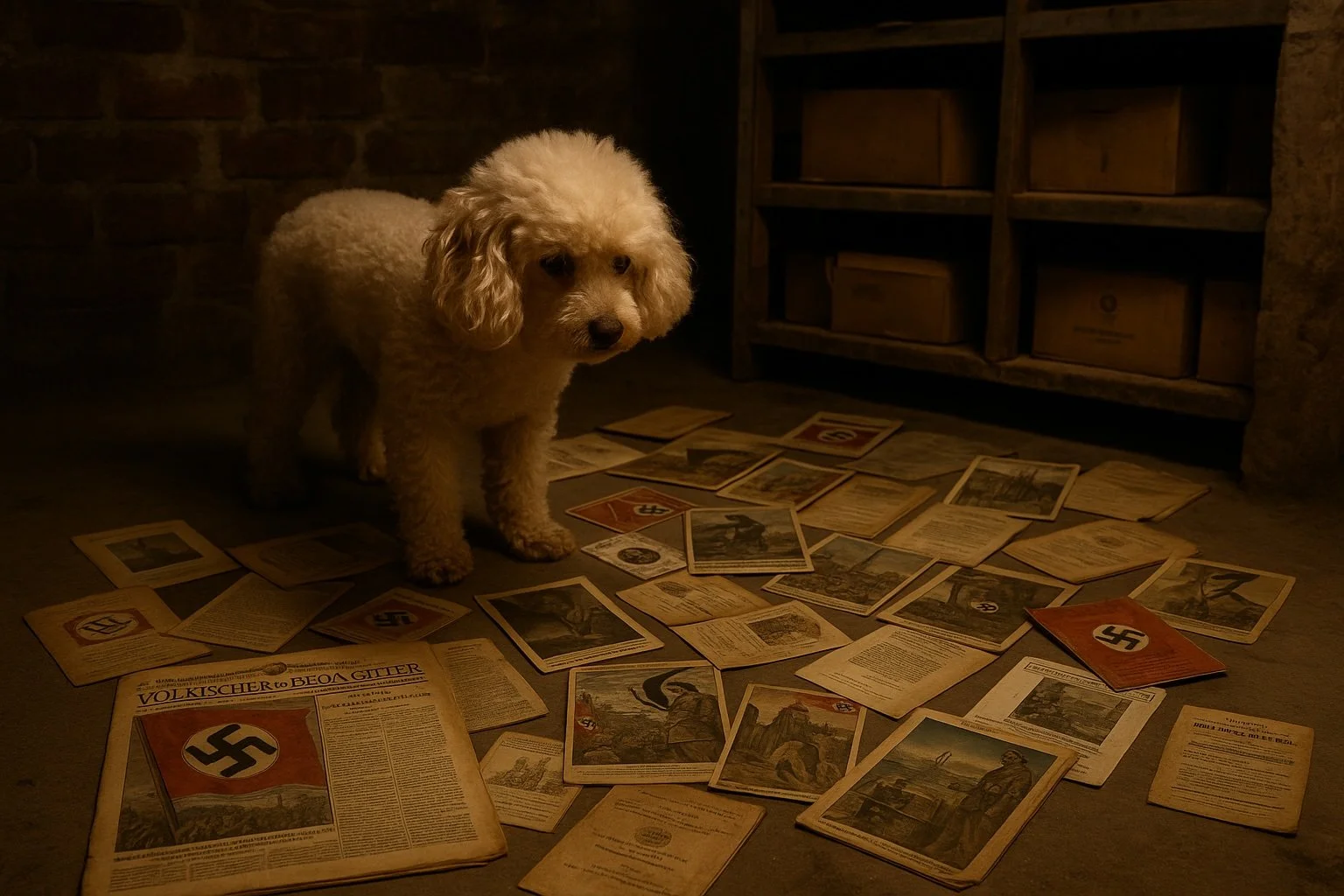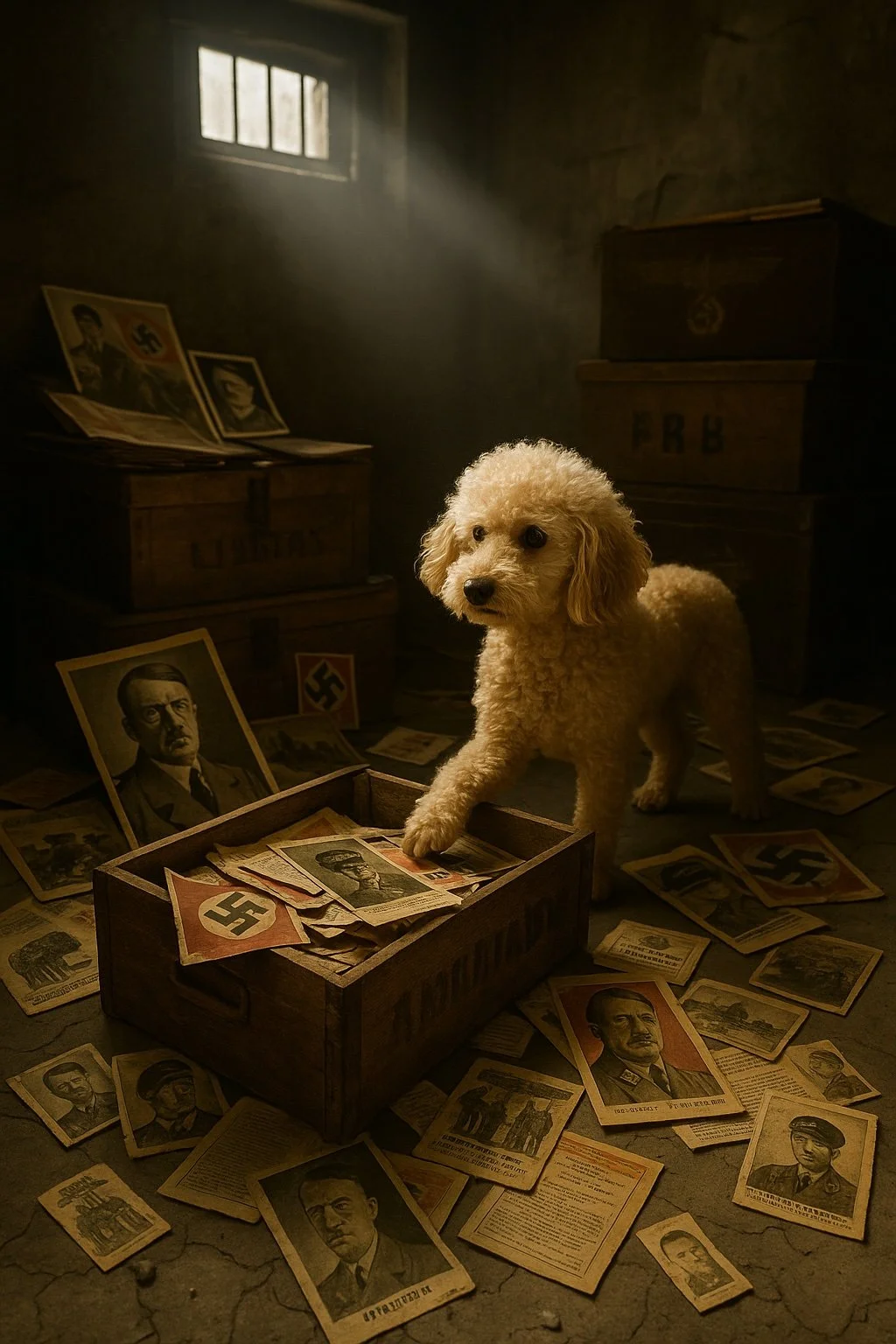Paws of Justice: Flossi Uncovers Argentina’s Nazi Filing Cabinet
In a discovery worthy of a second-rate political melodrama or a forgotten dispatch from a dust-choked embassy file, the Argentine Supreme Court has, quite accidentally, stumbled upon a trove of Nazi-era ephemera—no fewer than eighty-three crates of it—reposing undisturbed in its own basement like a ghastly souvenir from the age of moral ruin.
The boxes arrived in June of 1941 aboard the Japanese vessel Nan-a-Maru, dispatched with all the tact and subtlety of a diplomatic middle finger by the German embassy in Tokyo. The official explanation, offered with that peculiar mixture of self-importance and implausibility known only to minor consular staff, was that the crates contained personal belongings—perhaps a few Wagner scores, some Homburg hats, or an occasional bust of the Führer.
This fiction, however, collapsed upon even the gentlest inspection. Argentine customs, for reasons lost to bureaucratic inertia or divine inspiration, pried open five of the containers. Inside they discovered not toiletries and trinkets but the paraphernalia of totalitarian seduction: Nazi postcards, photographs of unsmiling men in jackboots, and thousands of notebooks inscribed with the brittle certainties of the Party line.
A federal judge, doubtless baffled and slightly inconvenienced, had the material impounded and passed the matter on to the Supreme Court, where it promptly disappeared into the somnolent paper shuffle of history.
Now, nearly a century later, as court staff prepared a museum—perhaps in hopes of showcasing gavels used in unimportant cases or portraits of men with beards and narrow views—they encountered these slumbering relics of ideological fanaticism. One imagines the scene: a junior clerk brushing dust off a crate labelled in Gothic script, and a superior peering in with the vague expectation of discovering a misplaced espresso set.
The court, newly awakened to its role as accidental custodian of fascist memorabilia, has wisely shifted the boxes to a room with enhanced security—one hopes more secure than the original basement—and has invited the Buenos Aires Holocaust Museum to undertake the solemn task of cataloguing and preservation.
Scholars, too, will be invited to rummage through the contents, searching for clues to the darker undercurrents of the Nazi era: perhaps to decipher forgotten propaganda networks or reconstruct the shadowy financial sinews that stretched from Berlin to far-flung, still-neutral republics.
It is hardly surprising that Argentina remained officially neutral until 1944 and then declared war only as history’s outcome grew clearer. Neutrality, after all, is a respectable position until it isn’t.
In the intervening years, tens of thousands of Jews fled European horror for Argentine refuge, seeking sanctuary in a land that, despite its flirtations with ambiguity, became home to Latin America’s largest Jewish population.
And now, in the heart of its highest legal institution, the past has resurfaced—not with trumpets or trials, but with boxes, dust, and the faint, unmistakable smell of old paper and old lies.







